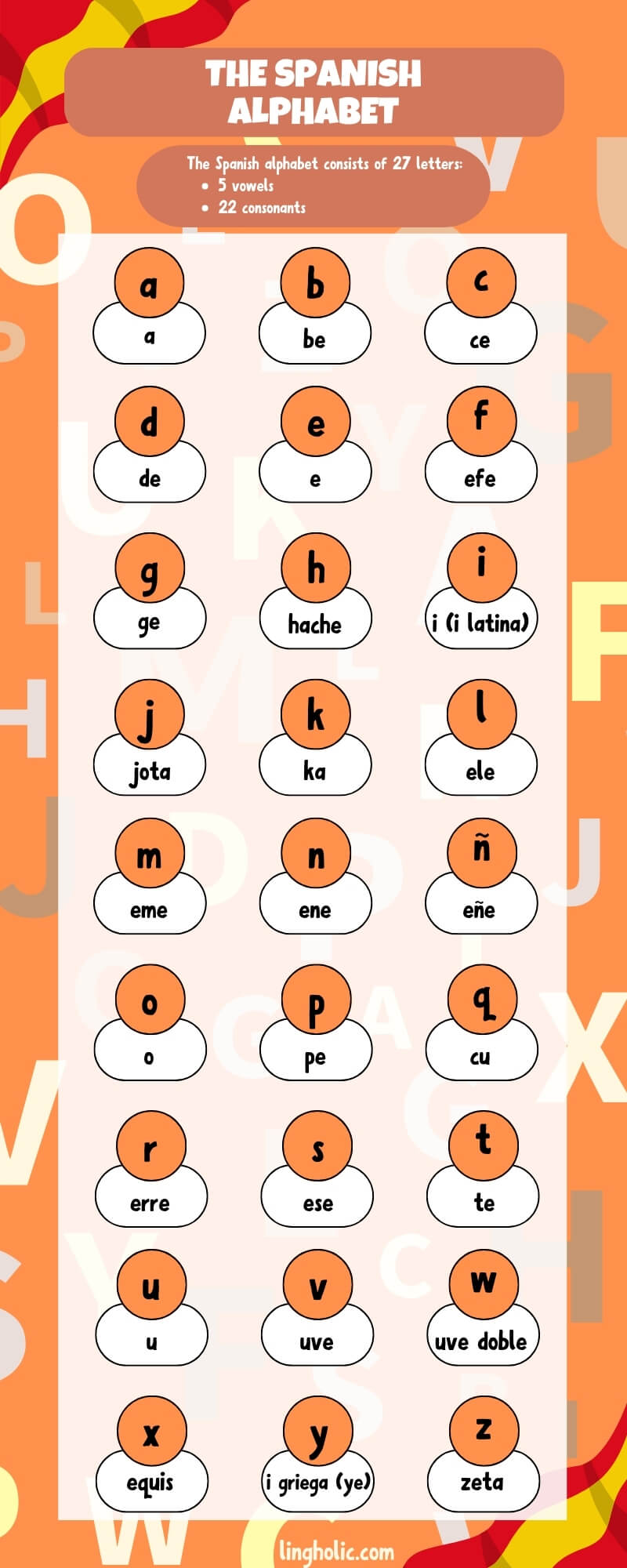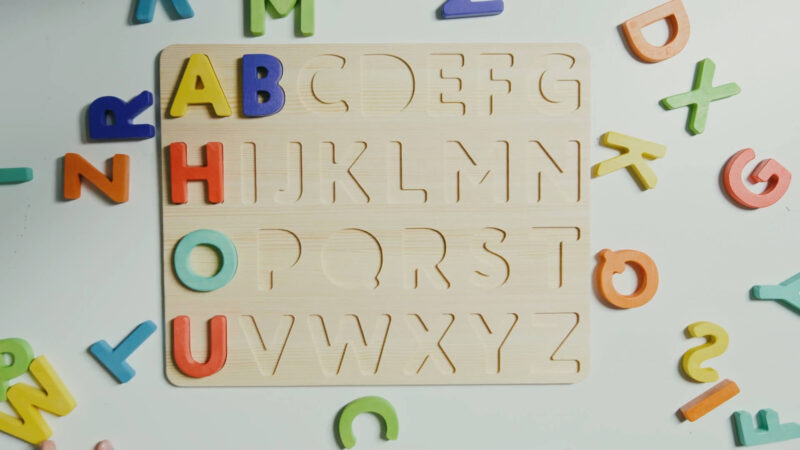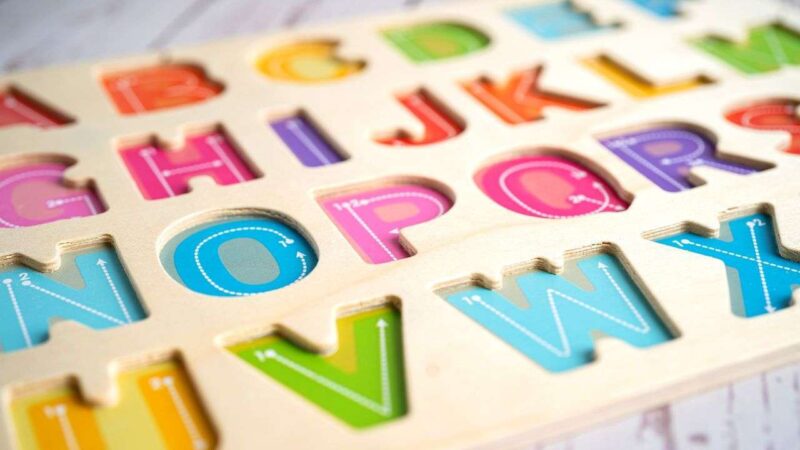The first step in learning a language is to learn the alphabet. At the same time, this is the most challenging part.
While it may seem simple that you can learn all of them quickly, it is usually much harder than that, and for a simple reason. It depends on your native language. There is a chance of your native language having similar letters, but it is extremely unlikely they are pronounced in the same way.
That is why I want to talk about the Spanish alphabet. I will provide you with all the letters, and their pronunciation.
The Spanish Alphabet and Pronunciation
With French, Italian, Portuguese, and Romanian, Spanish makes the Romance language group. Even though these are distinct languages, they have a fair share of similarities. The Spanish alphabet consists of 27 letters:

Vowels and Consonants
The vowels in Spanish (A, E, I, O, U) are crucial for mastering pronunciation, as they have a consistent sound that rarely changes, unlike in English. Each vowel has a single, clear sound: “a” is pronounced as in “father,” “e” as in “bed,” “i” as in “see,” “o” as in “sole,” and “u” as in “rude.”
This consistency makes them relatively easy to learn and provides a stable foundation for pronouncing more complex words. Most consonants have sounds similar to their English counterparts, but there are exceptions and special considerations.
For example, the Spanish “j” is pronounced like the English “h” but harsher, as in “jalapeño.” The “ñ” is a distinct sound not found in English, pronounced like the “ny” in “canyon.”
Special Letters and Pronunciations

The “ñ” is not just a letter but a symbol of Spanish identity, originating from the Middle Ages as a shorthand for double “n” sounds. Its pronunciation, akin to the “ny” in “canyon,” is emblematic of the language’s phonetic richness.
The rolling “r,” with its single and double forms, represents another pronunciation challenge for learners. A single “r” is lightly rolled, while the double “r” (rr) is pronounced with a stronger roll, a distinction that can alter word meanings.
Historically, the Spanish alphabet included “ch” and “ll” as separate letters, but they were removed to streamline the alphabet and linguistic practices. This change reflects the language’s evolution and the linguistic community’s efforts to standardize Spanish pronunciation and learning.
Practical Exercises and Tools
Improving pronunciation requires practice and exposure to the language in various contexts. There are several ways you can improve your pronunciation:
- Conversing with natives
- Watching movies
- Listening music
- Listening to native conversations
- Using a language learning app
Practicing aloud, particularly with exercises like spelling your name in Spanish or using example words to navigate the alphabet’s sounds, can significantly improve pronunciation skills.
These exercises allow learners to become comfortable with the sounds of Spanish, preparing them for more advanced pronunciation challenges.
Advanced Alphabet Learning

When you are comfortable enough with the basics, you should move on to learn more about advanced pronunciations. For example: Knowing the subtle differences between “b” and “v” or understanding when “c” sounds like “s” versus “k” can be challenging for Spanish learners.
Phonetic transcriptions and English approximations provide valuable guides in these cases, helping learners to grasp these nuances. For instance, “c” is pronounced as “s” before “e” or “i” and as “k” in other contexts.
The “g” sound can also be soft or hard, depending on the following letter, while “ll” and “y” often share a similar sound, though regional variations exist.
The Bottom Line
When you have both the alphabet and the pronunciation in front of you, you will have a much easier time learning the language. This is just the first step in a long road of learning the language as a whole.
I am Edward Quin, a teacher and part-time freelance writer specializing in Spanish and English. With a major in these languages, I have a deep grasp of their structures, cultural richness, and literary traditions. My passion for languages inspired me to become a high school teacher, where I motivate students to discover new cultures and languages.
Related Posts:
- Learn German Alphabet Pronunciation (With Sound)
- Top 5 Books for Learning Spanish Language 2024: Do…
- How to Choose the Right Language Learning Method?
- 6 Cultural Faux Pas to Avoid While Learning New Languages
- Comparing the Top 5 Language Learning Apps of the Year: 2024
- The Polyglot Approach to Learning Multiple Languages

